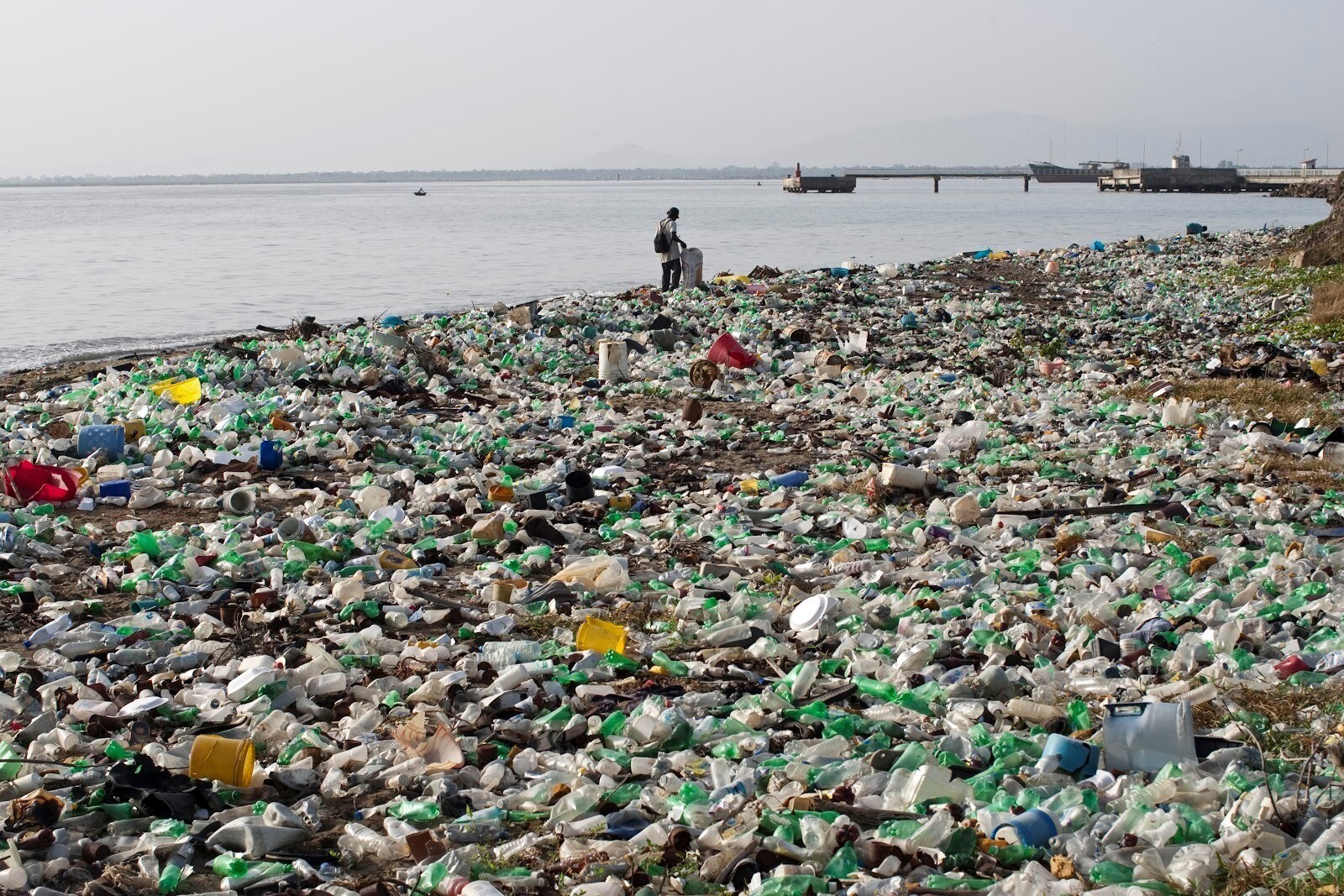The water where baby fish are outnumbered 7 to 1 by plastic

Beach debris found on a 200ft (60m) stretch of a Windward Shore beach on the island of Oahu in Waikane, Hawaii. Image: REUTERS/Carlo Allegri

Get involved with our crowdsourced digital platform to deliver impact at scale
Stay up to date:
Future of the Environment
Tiny larval fish in the nursery waters off the coast of Hawaii have a new and plentiful source of food, which has no nutritional value, is high in toxins, and can take decades to break down.
In these waters, plastic fragments outnumber baby fish by a ratio of seven to one, a recent study revealed.
Scientists have found bite-sized pieces of plastic invading ocean 'slicks' where baby fish feed and grow.
Life for many of the planet’s ocean fish species begins at the water’s surface, where naturally occurring slicks meander through the ocean. These thin strips of smooth water are a rich source of plankton, making a perfect nursery habitat for tiny larval fish eager for nutrition.
But, as the graphic shows, the same ocean movements that bring together this concentrated food supply also accumulate floating plastic fragments, which young fish mistake for plankton and ingest as food.
The study dissected hundreds of larval fish from Hawaii’s coastal slicks and found 8.6% of individuals had ingested pieces of plastic, almost two and a half times more than larval fish from nearby ambient waters.
Of the eight fish families analysed, seven contained plastic fragments. These include commercially targeted species such as swordfish, and flying fish which are a common food source for larger fish like tuna and seabirds.
What's the World Economic Forum doing about the ocean?
Plastic menu
There is insufficient data to determine if eating plastic is detrimental to the health of baby fish, but researcher Dr. Gareth Willians of the UK’s Bangor University, says the situation could leave larval fish vulnerable.
“The fact that they're eating these non-nutritious particles at the point when eating is so critical for their survival in those first few days, it can only be a bad thing," he told the BBC.
There are certainly repercussions for species further up the food chain, including potentially our own health.
Plastic pollution can harm biodiversity, damage ocean ecosystems and impact marine life. According to UN figures, around 13 million tonnes of waste plastic finds its way into our oceans each year.

But there is also an economic cost to this pollution. The UN Environment report, The State of Plastic: World Environment Day Outlook 2018, estimates that waste plastic causes $13 billion of economic damage to the global marine ecosystem each year.
There’s no quick fix to this global environmental threat, but urgent action is needed.
Plastic has myriad uses and is cheap, lightweight and easy to make. All factors which led to the global boom in its use. And, although the planet can’t cope with the amount of plastic currently produced, demand will continue to climb over the next decade or two.
The path to a more sustainable future lies in finding alternatives to single-use plastics, while developing initiatives that help reduce our dependence on them.
Don't miss any update on this topic
Create a free account and access your personalized content collection with our latest publications and analyses.
License and Republishing
World Economic Forum articles may be republished in accordance with the Creative Commons Attribution-NonCommercial-NoDerivatives 4.0 International Public License, and in accordance with our Terms of Use.
The views expressed in this article are those of the author alone and not the World Economic Forum.
The Agenda Weekly
A weekly update of the most important issues driving the global agenda
You can unsubscribe at any time using the link in our emails. For more details, review our privacy policy.
More on Nature and BiodiversitySee all
Dan Lambe
April 24, 2024
Roman Vakulchuk
April 24, 2024
Charlotte Kaiser
April 23, 2024
Jennifer Holmgren
April 23, 2024
Agustin Rosello, Anali Bustos, Fernando Morales de Rueda, Jennifer Hong and Paula Sarigumba
April 23, 2024
Carlos Correa
April 22, 2024







